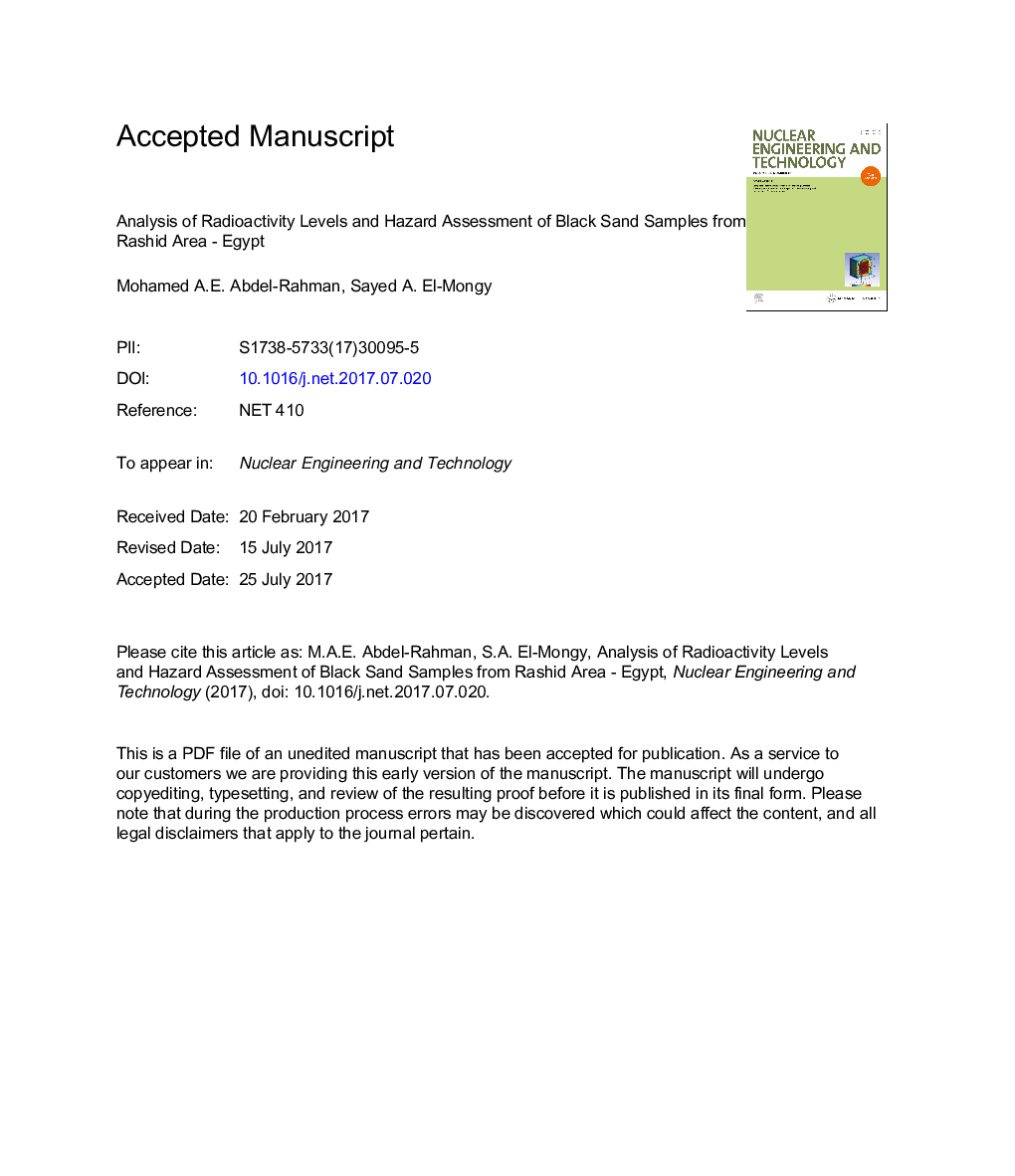| Article ID | Journal | Published Year | Pages | File Type |
|---|---|---|---|---|
| 8083964 | Nuclear Engineering and Technology | 2017 | 11 Pages |
Abstract
The aim of this study is to evaluate the radioactivity levels and radiological impacts of representative black sand samples collected from different locations in the Rashid area, Egypt. These samples were prepared and then analyzed using the high-resolution gamma ray spectroscopy technique with a high-purity germanium detector. The activity concentration (Ac), minimum detectable activity, absorbed gamma dose rate, external hazard index (Hex), annual effective dose rate equivalent, radium equivalent, as well as external and internal hazard index (Hex and Hin, respectively) were estimated based on the measured radionuclide concentration of the 238U(226Ra) and 232Th decay chains and 40K. The activity concentrations of the 238U, 232Th decay series and 40K of these samples varied from 45.11 ± 3.1 Bq/kg to 252.38 ± 34.3 Bq/kg, from 64.65 ± 6.1 Bq/kg to 579.84 ± 53.1 Bq/kg, and from 403.36 ± 20.8 Bq/kg to 527.47 ± 23.1 Bq/kg, respectively. The activity concentration of 232Th in Sample 1 has the highest value compared to the other samples; this value is also higher than the worldwide mean range as reported by UNSCEAR 2000. The total absorbed gamma dose rate and the annual effective dose for these samples were found to vary from 81.19 nGy/h to 497.81 nGy/h and from 99.86 μSv/y to 612.31 μSv/y, which are higher than the world average values of 59 nGy/h and 70 μSv/y, respectively. The Hex values were also calculated to be 3.02, 0.47, 0.63, 0.87, 0.87, 0.51 and 0.91. It was found that the calculated value of Hex for Sample 1 is significantly higher than the international acceptable limit of <1. The results are tabulated, depicted, and discussed within national and international frameworks, levels, and approaches.
Related Topics
Physical Sciences and Engineering
Energy
Nuclear Energy and Engineering
Authors
Mohamed A.E. Abdel-Rahman, Sayed A. El-Mongy,
